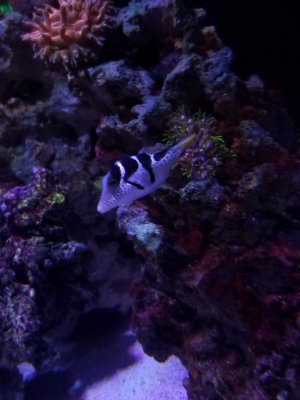I have a baby (small) Valentini Puffer coming in this afternoon and I am getting WAY too many mixed responses on acclimation. It's the first shipped fish i've ever gotten.
What is the best way to acclimate it? Some say if you do a drip the ammonia will skyrocket and you can poison the fish, and others are saying to just plop it in after floating the bag (wont this cause issues with salinity differences?). Help!
Thanks.
What is the best way to acclimate it? Some say if you do a drip the ammonia will skyrocket and you can poison the fish, and others are saying to just plop it in after floating the bag (wont this cause issues with salinity differences?). Help!
Thanks.


















